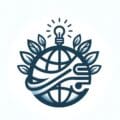In today’s post, I want to discuss scope (and I do not mean the minty, green kind). Scope is context. In other words, where data lives and how it can be accessed. In classical OO languages, such as C# and Java, there is a concept of private and public scope. In public scope, other code can access the information. In some scenarios, this is desired, but most of the time we want to disallow this as we want to encapsulate, or protect our data. Private scope does just that. We can have data that is private and thus protected from harm.
JavaScript is not a classical OO language. It is a prototypal OO language. The same concept lies within JavaScript, but the terminology is different and the methods to achieve it have some varying nuances. In JavaScript, we call it global and local scope.
- Global = Public
- Local = Private
Tip: try to make as much as you can local so as to encapsulate your code. In fact, an object-oriented principle is to encapsulate what varies. This avoids odd behaviours in your program by some code changing your global information in an undesirable fashion.
So how does this look/work in JavaScript?
[code lang=”js”]
// Create global variable
var globalVar = 1;
// Create global function
function scopeFunc(){
// Create local variable
var localVar = 2;
// Grab div element
var outputDiv = document.getElementById("scopeDiv");
// Output div element by accessing the global variable
outputDiv.innerHTML += globalVar + "<br>";
}
// Grab div element
var outputDiv = document.getElementById("scopeDiv");
// Output div element
// This line results in an error because localVar is encapsulated
outputDiv.innerHTML += localVar;
[/code]
As you can see from the above code, we can access the global scope from within the local scope of the function, but cannot access the local scope of the function from the global scope. Again, this is very handy in protecting your code from undesired behavior.
Happy Coding!
Clay Hess



